Have you ever had that frustrating moment when your swimming pool goes from crystal clear water one day to cloudy the next? It’s one of the most common pool issues that home pool owners face, turning what should be a refreshing oasis into a murky water problem. Cloudy pool water contains tiny suspended particles that may be nearly invisible to the naked eye – similar to how smoke particles in air create a hazy appearance. These impurities can be introduced from a myriad of environmental sources, bathers, or even your source water.
The cloudiness can intensify due to several possible causes: improper water balance, low sanitizer levels, lack of routine oxidation, poor filtration, or inadequate circulation. While having your own pool is great (no more swimming in crowded public pools or paying for tickets to get in all summer), doing your pool maintenance can become hard to understand when something goes wrong. What might seem like a minor issue can actually be quite serious – cloudy water isn’t just an aesthetic problem but can indicate conditions where harmful bacteria thrive, potentially causing health problems for swimmers.
The good news is that with the right approach, you can treat this common problem and have your pool clear again in no time. Whether it’s caused by chemical imbalance, algae, excess debris, excess calcium, poor water chemistry, or other contaminants, there are effective solutions to address each specific type of cloudiness. Factors like your pool’s location, the current season, and your maintenance routine all play a role in both the diagnosis and treatment. With proper attention to the root cause, most pools can clear up within a few days, returning to that inviting crystal clear condition that makes summer pool time so enjoyable.
1. Low Runtime
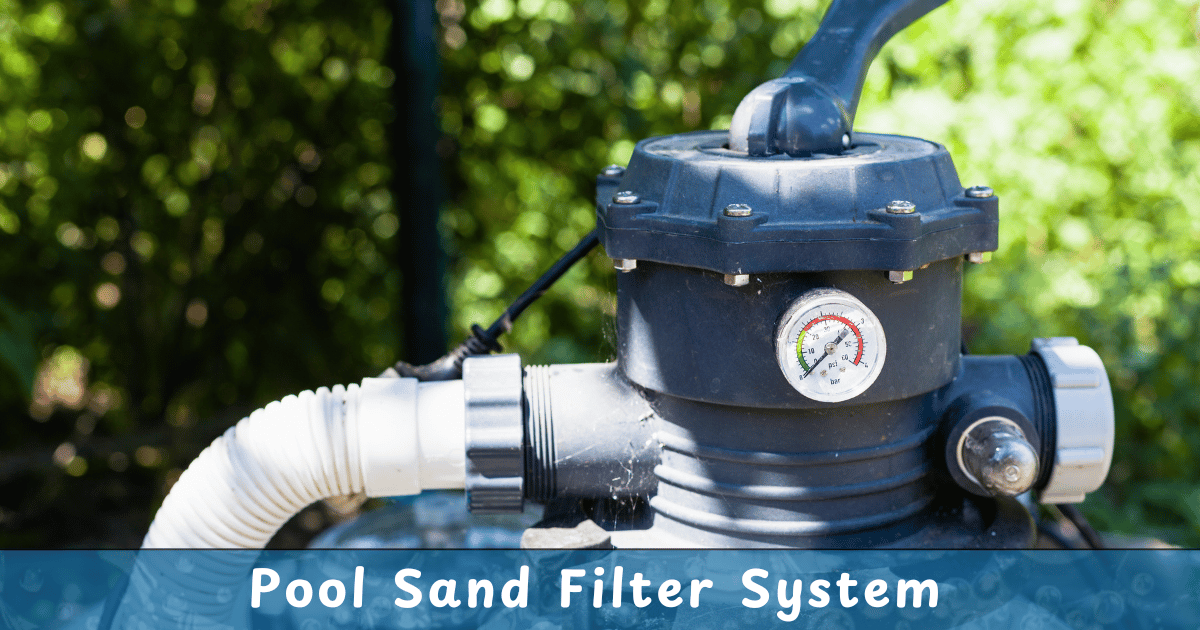
One of the most common culprits might be that you’re simply not running your filter system long enough. Many pool owners don’t realize that a pool pump should be running for at least 8 hours per day during regular use – and up to 24 hours when dealing with serious clarity issues.
When your pool isn’t properly filtered because of insufficient run times, bacteria begin to multiply and contaminants can’t be removed effectively. A properly circulating pool constantly sucks up debris like leaves, twigs, and microscopic particles through the skimmer and filter basket. Without adequate runtime, your chemicals won’t be mixing properly throughout the water, and the majority of cleaning agents like chlorine won’t be able to work effectively. Don’t waste your hard-earned money and spend time adding chemicals to a pool that isn’t running long enough to distribute them!
I once inherited a perpetually cloudy pool from previous homeowners who ran their system just once or twice a week for a few hours. After increasing the runtime to 8 to 12 hours daily for seven days straight, the transformation was remarkable! Remember that your filtration system is doing the heavy job of keeping your pool water clean – so give it the runtime it needs. If you’ve addressed runtime issues and still have problems, you might need to check for filter problems or equipment that’s failing or needs to be replaced.
Solution
It’s important to run your filter system for more hours each day to effectively clean the water. I’ve found that letting my own filtration make the most of available cleaning time by operating at least 8-10 hours daily dramatically improves clarity. Don’t forget to backwash your filter at least once per week to remove trapped debris that can hinder performance. This simple adjustment has helped me fix cloudy pool issues numerous times, especially during heavy usage periods when debris accumulates more often.
2. Chemical Imbalances
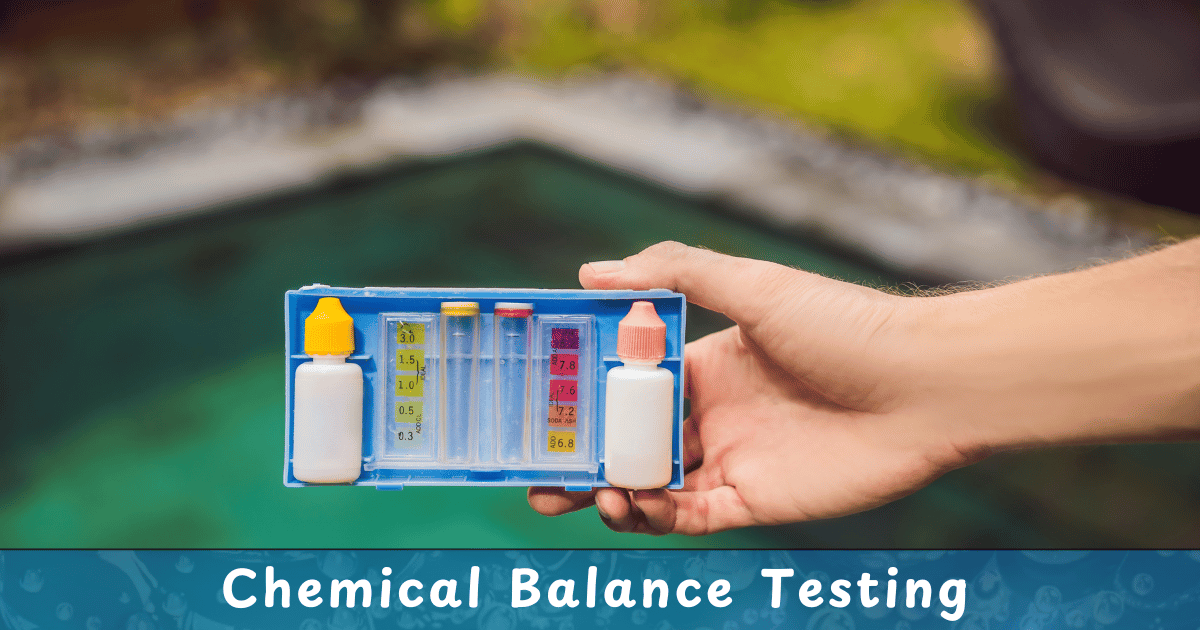
Water clarity issues in your pool often stem from chemical imbalances. Maintaining the right balance is truly an art form. Last summer my pool suddenly went from crystal clear to cloudy almost overnight! The most common reasons for this include low chlorine level which allows bacteria to grow, or pH level that’s too high or too low. When alkalinity is unbalanced, it creates perfect conditions for your pool to turn green as pathogens multiply. Regular testing of your pool water easily determines if you need to add a shock tablet to sanitize the water.
Debris like leaves and organic build-up including bodily contaminants such as sweat and sunscreen can also cause issues. UV rays from the sun break down stabilized chlorine, making it less effective. I recommend using test strips or a liquid test kit (strips are easier and quicker but less accurate) to check levels regularly. You can also take a good sample to your local pool store for professional analysis. Once levels are properly adjusted, run your filter for two to three days – this approach has balanced my own pool countless times when needed.
Solution
Testing your water regularly is crucial – use test strips, a liquid test kit, or take a sample to your local pool supply store. For a clear pool, ensure your free chlorine levels remain between 1-3 ppm (parts per million). The difference between free and total chlorine indicates the presence of chloramines, an irritating byproduct that contributes to cloudiness and can be corrosive to equipment.
If your combined chlorine (the difference between total and free) is above 0.5 ppm, it’s time to shock your pool. Cal-hypo shock (calcium hypochlorite) is an effective active ingredient for shocking your pool during peak pool season as it refreshes sanitizer levels and prevents further cloudiness. Don’t forget about cyanuric acid (CYA), which protects chlorine from the sun’s UV rays breaking down too quickly. Maintain CYA between 30-50 ppm to stabilize chlorine in sun-exposed pools. As a solution to quickly improve water clarity, ensure your filter is running at optimal pressure and perform a backwash if needed, as proper filtration requires adequate operating time.
Tip: If your pH levels are too low, adding baking soda can help – aim for a pH of around 7.4 (not pH of 8 which is too high). This raises alkalinity and significantly improves water clarity. I’ve found that maintaining this balance in my salt water pool reduced cloudiness issues by about 80% compared to when I neglected regular testing.
3. Algae
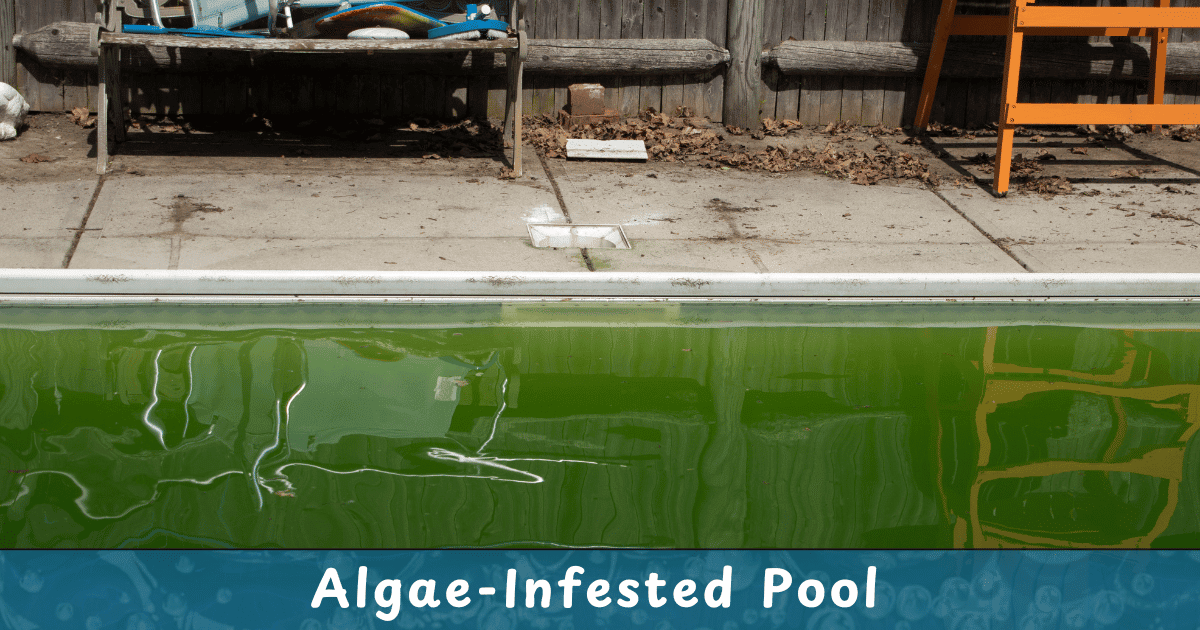
When your pool water turns cloudy, algae can be the culprit. These microscopic organisms come in different types and colors, with green being the most common. To identify which variety is affecting your sanctuary, pay attention to the color of cloudiness and its corresponding characteristics. In my experience maintaining pools for over a decade, ensuring adequate chlorine level is your first line of defense against these invaders. If treating has become necessary, specialized algaecides can be added alongside a clarifier to achieve the desired clear result. The time it takes to clear up depends on infestation severity, but proper chemical balance will speed up this process. I’ve found that patience combined with consistent treatment yields the best results—something many pool owners overlook when seeking that pristine blue water we all love.
Solution
When algae starts to bloom in your pool, causing that unfortunate cloudy pool water. First, take a sample to your local pool store for analysis to determine the exact problem. Once algae is confirmed, start by shocking your pool with a high dose of chlorine – you may need to double or triple shock depending on the type of algae. Apply treatment at dusk or night for maximum effectiveness, allowing it to dissolve and work overnight for at least 8 hours. After treatment, brush the entire pool surface thoroughly to disturb the algae growth and help the chemicals penetrate.
Run your filter continuously for several days to capture dead algae, and backwash the filter regularly as needed. Don’t forget to remove scum and stain that accumulates on surfaces. Test and balance your water level and pool chemicals after a day or two. Adding an algaecide as a preventative solution to treat early stages of regrowth will help keep algae from coming back. With proper cleaning and maintenance, your pool should clear up within a week, though severe cases might require a second container of shock. Regular maintenance especially after a rainstorm that brings debris and pollen will help eliminate contaminants and chloramines that contribute to cloudy water. Remember to add chemicals according to manufacturer instructions, and retest frequently until the water is fully cleared and the algae eradicated.
4. Excess Debris

Excess debris can also be a common reason for cloudy pool. Fallen leaves, dirt, and other entities can negatively impact your water quality, creating an unsightly appearance. These particles not only make your pool look dirty but also start clogging your skimmer and pump baskets, forcing your filtration system to work harder. As debris accumulates, it uses up your free chlorine that should be fighting algae instead. I’ve found that weekly cleaning prevents most cloudy issues before they start – but if you already have an algae problem, you’ll need to learn how to get rid of it quickly before it worsens.
Solution
This issue frequently arises during springtime or after rainstorms that blow dirt into your pool. I learned this the hard way after a major thunderstorm left my own pool looking like a murky pond! To combat this effectively, regularly skim the surface to remove leaves and big stuff, then empty your skimmer baskets frequently. If you see particles still floating around, vacuum the pool thoroughly and brush the walls as needed. You might need to lower the water level and drain some water, especially after heavy rain that can dilute your chemical levels and cause them to drop, which may lead to algae growth. Don’t forget to backwash your filter and test chemical balance, adding chlorine as needed. These ways will aid in keeping contaminants out and prevent clarity issues from worsening. Consider this your quick guide to crystal clear water!
5. Excess Calcium
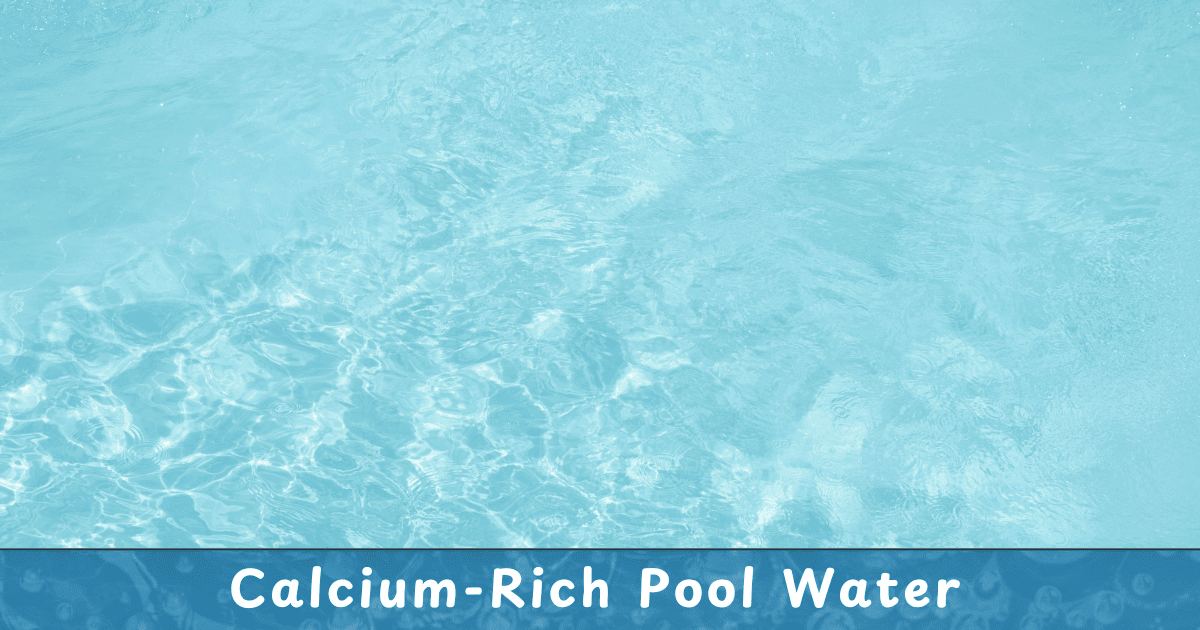
Having excess calcium in your swimming pool can definitely make it cloudy. When the calcium levels get too high, tiny particles suspended in the water, reducing clarity and potentially starting to create calcium scales throughout your pool surfaces.
Solution
To tackle excess calcium that’s making your pool hazy, I’ve found using a clarifier works wonders as it helps particles clump up so your filter can suck up and remove them more easily. I recommend you partially drain the pool and refill with fresh water to dilute high mineral content. Don’t forget to backwash your filter system afterward to flush out trapped calcium deposits. Always test and balance your pool water chemistry weekly to keep out recurring cloudiness issues—maintaining proper calcium hardness levels (ideally 200-400 ppm) prevents both corrosion and scaling problems that plague many pool owners.
6. High pH

If testing reveals a pH above 7.8, you’ve likely found your problem. Alkaline water causes calcium and other minerals to come out of solution, creating that hazy appearance.
Solution
To bring pH down, add a pH minus chemical to the water, which helps improve clarity by balancing acidity. After adding the treatment, circulate your pump for at least 24 hours to ensure even distribution. Once complete, check the alkalinity level again, as maintaining proper alkalinity helps stabilize your pH for lasting results.
7. Broken DE Filter Screens
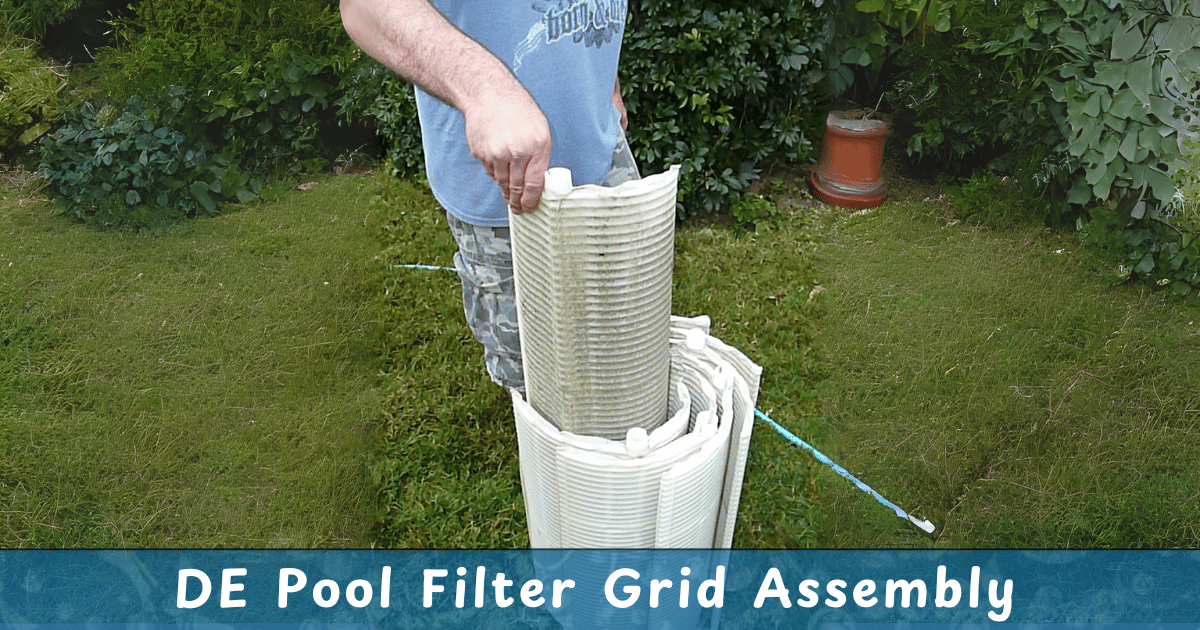
When your pool looks cloudy, check for broken DE filter screens because they can be a common culprit. This issue specifically applies to diatomaceous earth filters, where the fine white powder (DE) is periodically added to maintain proper filtration. If these mesh screens inside your filter rip, they can’t effectively catch particles, allowing them to release back into your water. When this happens, microscopic debris travels through your return fittings, creating that foggy appearance you see. Before you waste money getting more chemicals or adding more DE, inspect these critical components first—they might need replacement for your water to regain its crystal clarity.
Solution
These internal components trap debris but can tear over time. You’ll need to replace the grid assembly if cleaning doesn’t work. Look for tears or warping when inspecting the filter elements.
Tips for Preventing a Cloudy Pool
A cloudy pool water can be frustrating, but with proper maintenance and prevention techniques, you can enjoy clear, healthy swimming all season long. The key to success lies in consistent monitoring and routine care, which saves both time and expense in the long run. Maintain proper water balance by keeping chlorine levels at 1-3ppm and PH between 7.2-7.6 (too acidic or alkaline water causes cloudiness). Run your pump at least 10-12 hours per day to ensure proper pool water circulation and aim your pool jets slightly downward to help reduce contaminants.
Regular maintenance should include weekly treatments to oxidize and destroy organic matter like perspiration, suntan lotions, hair sprays, body oils, urine, pet dander, and cosmetics. Use a pool brush 2x weekly to scrub the pool surface and remove debris. Remember to backwash your filter when necessary and chemically clean it every 4-6 weeks. If you have filter cartridges, rinse them after heavy usage. Consider regular filter inspections and replace media as directed by the manufacturer. Additionally, shock your pool after heavy rain or lots of swimmers. This combination of techniques will ensure your pool stays crystal clear throughout the swimming season.
Frequently Asked Questions (FAQ’s)
1. How do you clear a cloudy pool after rain?
After rain, your pool may get cloudy. To fix this:
- Test water and balance pH, alkalinity, and free chlorine levels
- Check for phosphorus
- Use shock treatment or get superchlorinated
- Brush sides and walls
- Vacuum the bottom and floor
- Clean filters thoroughly
- Run pump until water looks clear
2. How do you clear a cloudy pool?
Your cloudy pool might be caused by a clogged filtration system. Check your pump for worn or broken parts. Run it for 8 hours per day to maintain proper flow. Backwash your filter until the stream runs clear. Use filter cleaner to chemically clean the media. Empty the skimmer basket of debris that might cause a clog and restrict water flow.
3. Can too much chlorine cause cloudy water?
Yes, excessive chlorine might be the culprit when pool water looks cloudy. High levels of chlorine can actually react with organic matter and contaminants, leading to the formation of chloramines.
These chlorine compounds often result in cloudiness and water clarity issues. The formation happens when chloramines develop in your pool, creating a cloud that reduces clarity. Watch your chlorine levels to prevent organic contaminants from causing these problems!
4. Is it OK to swim in a cloudy pool?
A cloudy pool presents both visible and invisible risks. Swimming in unclear water can be dangerous as you can’t see below the surface, increasing drowning risks. A full filter system might be struggling, allowing harmful bacteria like E. coli or Legionella to thrive. While not always a hazard, cloudiness often signals problems that could affect your health.
5. Will shock clear a cloudy pool?
Yes! Pool shock with the recommended dose of chlorine can clear cloudy, hazy-looking water.





